Hibiscus produces colorful blooms, and the green leaves add extra beauty. But yellow leaves among all the greenery are something you won’t enjoy. There could be various reasons behind the problem, and you should fix it as soon as possible if you want the plant to thrive longer.
Inadequate watering, nutrient deficiency, inappropriate sunlight, and pest infestation are the primary cause of yellow leaves in the hibiscus plant. To prevent yellow leaves, give your Hibiscus full sun with some shade, keep the soil evenly moist, and provide enough nutrition to the plant.
Yellow leaves don’t mean that your Hibiscus is dying. The plant is facing some issues. This guide will share all the possible reasons behind hibiscus leaves turning yellow. Besides, I will also share ways to fix the issues and prevent them.
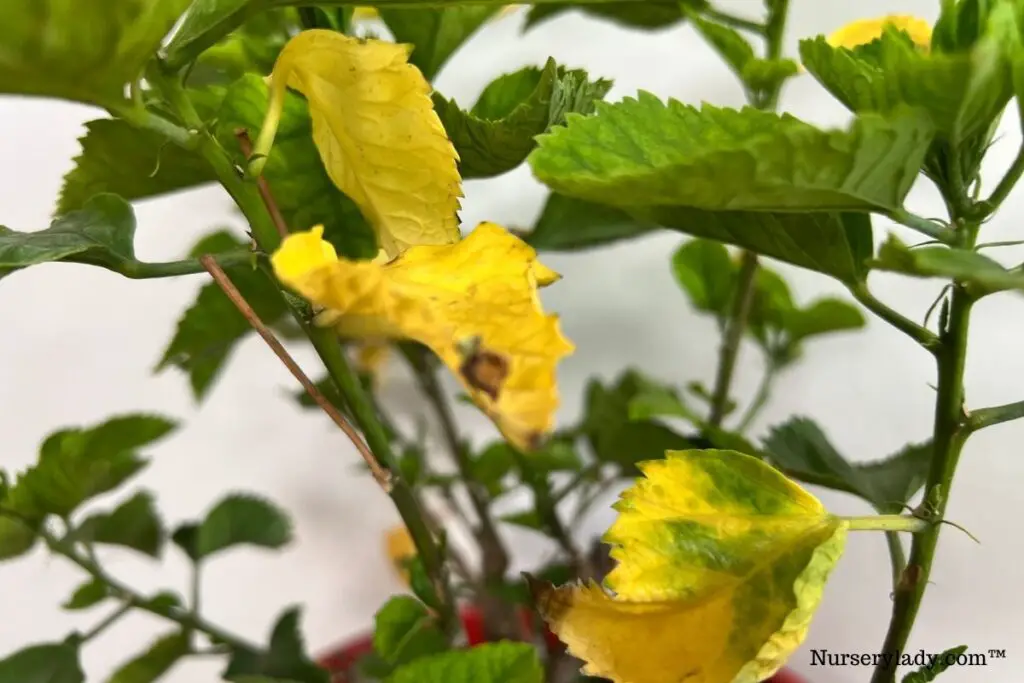
Why are the leaves of my hibiscus plant turning yellow?
A lot of circumstances are responsible for hibiscus leaves turning yellow.
When the plant faces any problem, it affects the photosynthesis and production of chlorophyll.
For this, the leaves lose their color and vigor, ultimately turning yellow.
Let’s have a quick look at all the probable reasons behind Hibiscus leaves turning yellow:
- Complicated relationship with shade and sunlight
- Droughts
- Too much water due to overwatering and poor drainage
- Nutrient deficiency
- Excessive phosphorus build-up
- Improper soil pH level
- Temperature variation
- Chemical shock
- Pest infestation
- Dormancy
Let us learn about the reasons in detail and how to fix them.
Sunlight and shade
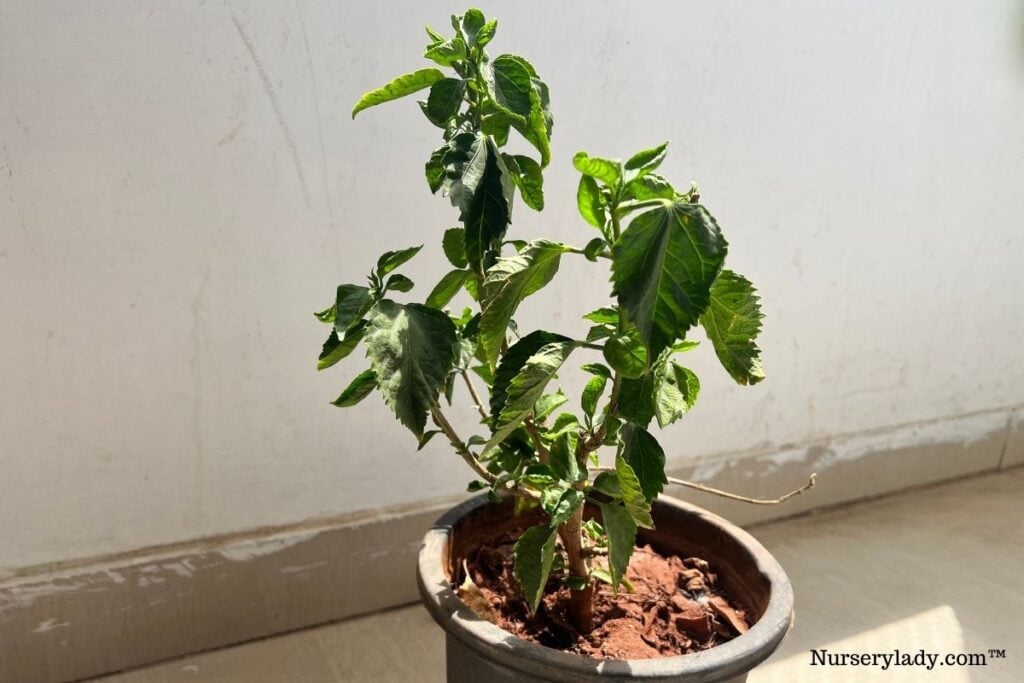
Generally, Hibiscus requires 6 to 8 hours of sunlight.
The more leaves the plant has, the more light it will require.
The leaves that receive hard shade will turn yellow.
Suppose your Hibiscus is standing under a partially shaded area.
Only the exposed area will have green leaves, and the part that is not getting light will become yellow.
Sometimes, the plant stands under the full sun, but some leaves don’t receive the direct sunlight they need due to overcrowded leaves.
In that case, those leaves will turn yellow.
On the other hand, excessive sunlight can also be harmful, especially for leaves directly exposed to the full sun.
It is riskier in the summers when the heat intensity is high enough.
It will burn the leaves and turn them yellow with white spots.
In low light, the leaves become only yellow. In sunburns, the leaves turn yellow with white spots.
This distinctive feature will help you differentiate between the two.
How to fix it?
If the plant is standing under partial shade, try shifting it under the full sun.
If it is a grounded plant, try removing the blockage that creates partial shade.
If there are overcrowded leaves, prune some leaves by considering selective pruning.
Let the shaded leaves have some light.
If the sunlight intensity is too much, fix transparent shading nets to filter the direct sunlight.
Since some amount of natural light is necessary, let the Hibiscus have direct sunlight for 2-3 hours in the morning.
Then shade them for the rest of the day to prevent sunburn.
Also read: How Much Light Does A Hibiscus Plant Need? (What Kind, How Much & More)
Droughts
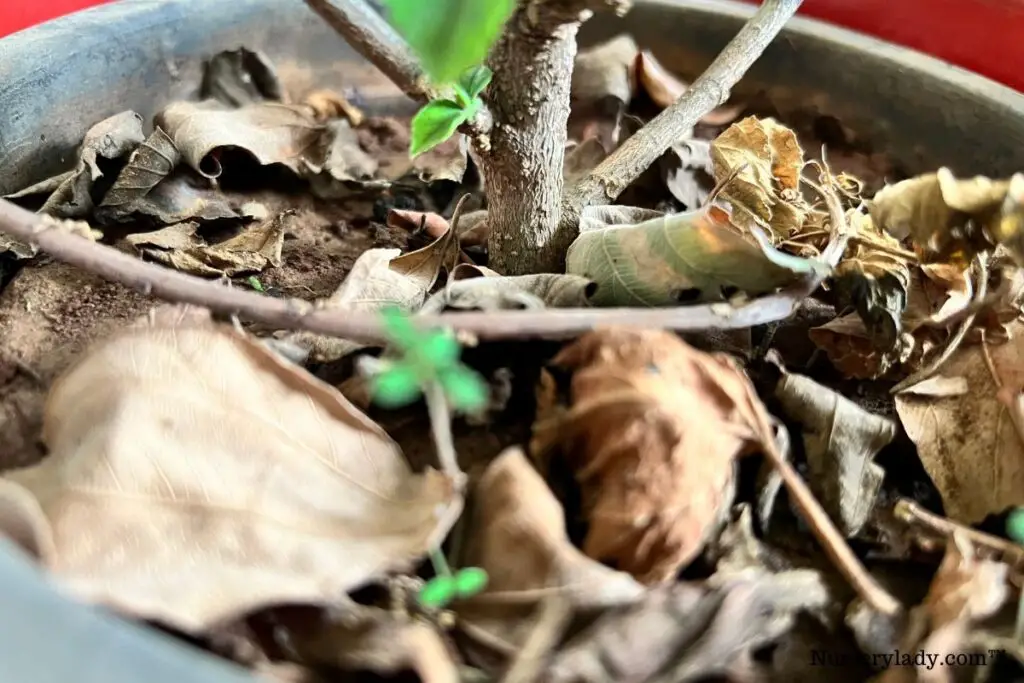
Both excessive moisture and no moisture can make the leaves turn yellow.
But to differentiate the two, the texture of the leaf can help.
In prolonged droughts, the leaves become dry, crispy, shriveled, and curl downwards.
On the other hand, overwatering makes the leaves damp, fat, and spongy.
Underwatering is not the only one responsible for drought conditions.
A lot of other issues can dry out the soil despite proper watering:
- Fast-draining soil: Hibiscus enjoys growing in evenly moist soil. If the plant is planted in soil that cannot hold the moisture, it will drain quickly without allowing the roots to absorb it. It develops a scarcity in proper moisture levels and turns the leaves yellow.
- Excessive dry wind: If Hibiscus is planted in a windy location, the strong winds can dry out the soil faster. The plant will also lose moisture. Excessive wind can take away all the moisture and turn the leaves yellow.
- Underwatering: If Hibiscus is planted in soil with good retention quality, you seldom need to water the plant frequently. But, it would help if you still watered them to maintain consistently moist soil. If you don’t water them, the soil will remain dry for a long time, resulting in yellow leaves due to dehydration. Insufficient water can also block the flowering process.
How to fix the problem?
Water hibiscus plants regularly every 4-5 days during the spring, daily in the summers, and less in winters.
While watering, soak the soil generously so that the water can reach the roots.
The roots are 6 inches deep.
If your plant is potted, shift them to a location with lots of trees around.
The trees can block the wind from reaching the soil bed and prevent frequent drying.
Make sure that the new location has full sun.
Shelter the plant from the winds.
Plant other shrubs around them as companions to act as a wind buffer if you cannot shift them.
Add a layer of compost as mulch to increase the soil’s retention quality.
It will also increase the soil’s nutrition and increase humidity by trapping the moisture in the soil.
Apply it once in spring. Add again in the mid-summer if the soil dries too quickly.
Mist the leaves regularly to increase humidity and prevent the moisture from losing frequently.
Also read: Do Hibiscus Like To Be Misted? (+Humidity Requirements)
Looking for gardening supplies? We have tested 100's of products before recommending them to you guys. Check out our best pick below:
| Image | Gardening Supplies | Best Price? |
|---|---|---|
 Top
Top Top
Top | Raised Garden Bed Kit | Check On Amazon |
 | XLUX Soil Moisture Meter, Plant Water Monitor, Soil Hygrometer Sensor for Gardening, Farming, Indoor and Outdoor Plants, No Batteries Required | No Results |
 Top
Top Top
Top | 82 Pcs Garden Tools Set and Extra Succulent Tools Set | Check On Amazon |
 | Joeys Garden Expandable Garden Hose with 8 Function Hose Nozzle, Lightweight Anti-Kink Flexible Garden Hoses, Extra Strength Fabric with Double Latex Core, (50 FT, Black) | No Results |
 Top
Top Top
Top | Dual Chamber Compost Tumbler | Check On Amazon |
 Top
Top Top
Top | Sunnyglade Plant Stakes | Check On Amazon |
 Top
Top Top
Top | Organic Cold Pressed Neem Seed Oil | Check On Amazon |
 Top
Top Top
Top | Mighty Mint Gallon :-Insect and Pest Control Peppermint Oil | Check On Amazon |
 Top
Top Top
Top | Scotts DiseaseEx Lawn Fungicide | Check On Amazon |
 Top
Top Top
Top | Jacks Classic 20-20-20 All Purpose Fertilizer | Check On Amazon |
 Top
Top Top
Top | 30,000 Seeds Pollinator Attracting Wildflower Mixture | Check On Amazon |
 Top
Top Top
Top | Survival Vegetable Seeds Garden Kit-Over 16,000 Seeds | Check On Amazon |
Too much water
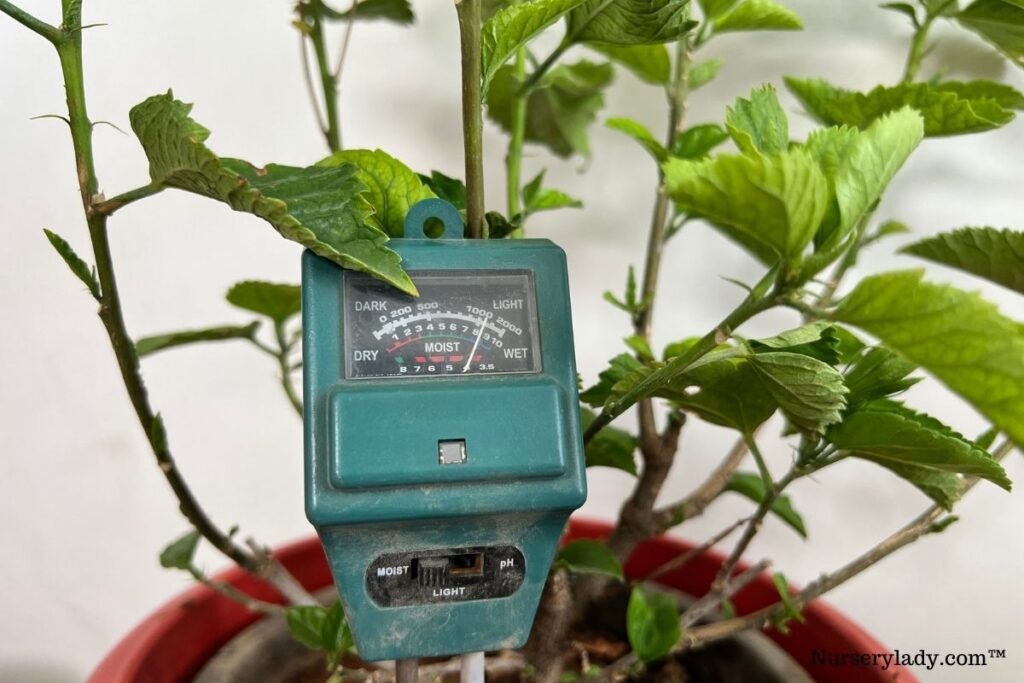
Since Hibiscus used to grow in the moist jungles, they enjoy consistently moist soil.
That is why they are easy to overwater.
When the surrounding area of the roots is full of moisture, it suffocates them.
Due to this, the roots fail to transfer the moisture to other plant parts.
As a result, they will have yellow leaves despite having lots of water.
Many situations are mostly responsible for it:
- Overwatering: Hibiscus enjoys regular watering as they like consistently moist soil. But watering too frequently without letting the soil dry can increase the moisture level around the roots and make the leaves yellow. Over time, the plant may suffer from root rot.
- Slow-draining soil: Soil with high clay content, compact or extremely soggy soil drains water very slowly. It makes a pool around the roots, thus causing them to suffocate. Besides root rot, the plant will become prone to pests and diseases.
- Watering too much in winter: Winter is the time when Hibiscus slow down their growth. So, they will absorb the water very slowly. So, if you don’t allow the soil to dry before watering, it will cause overwatering.
- Container not having drainage holes: If the pot doesn’t have drainage holes, the water will remain stagnant and again suffocate the roots.
How to fix the problem?
Always allow the soil’s top 1-2 inches to dry out before opting for the next watering.
In the spring, water them every 4-5 days. In the summers, water them regularly.
Since they grow slowly in the winter, water them every 1-2 weeks.
Use soil that has good drainage quality along with retention.
Hibiscus enjoys light loamy soil. Add some sand or gypsum to improve the drainage.
If the plant is heavily overwatered or suffered root rot, take it out, remove the damaged parts, and transplant it to a new location.
Don’t expose them to the direct sunlight until it recovers completely.
Also read: How To Water Hibiscus Plant? (How Much, How Often & More)
Nutrient deficiency

Hibiscus plants are heavy feeders. So they will turn yellow if they ever lack nutrition.
In some cases, they will also have a shortage of flowers.
A soil that doesn’t retain properly or hasn’t been mulched for years will make the plant suffer nutrient deficiency.
Soil alone cannot provide all the essential nutrients to the plant.
Over time, the soil gets depleted due to regular watering.
So, if you don’t fertilize them separately, they won’t be able to have enough nutrients.
Without enough nutrition, the plant will not be able to maintain the color of the leaves; they will lack chlorophyll and make the leaves turn yellow.
How to increase nutrition?
You need to change or rejuvenate the soil every year to improve its quality.
Add compost to your soil bed twice a year to provide the plant with enough nutrition.
Don’t forget to fertilize during the spring and summer.
If you are using liquid fertilizer, use it every 2 weeks.
For slow-release, use every 3-6 months.
Don’t fertilize in the winter.
Also read: What Is A Good Fertilizer For Hibiscus Plants? (Ideal Ratio+Best Pick)
Phosphorus build-up
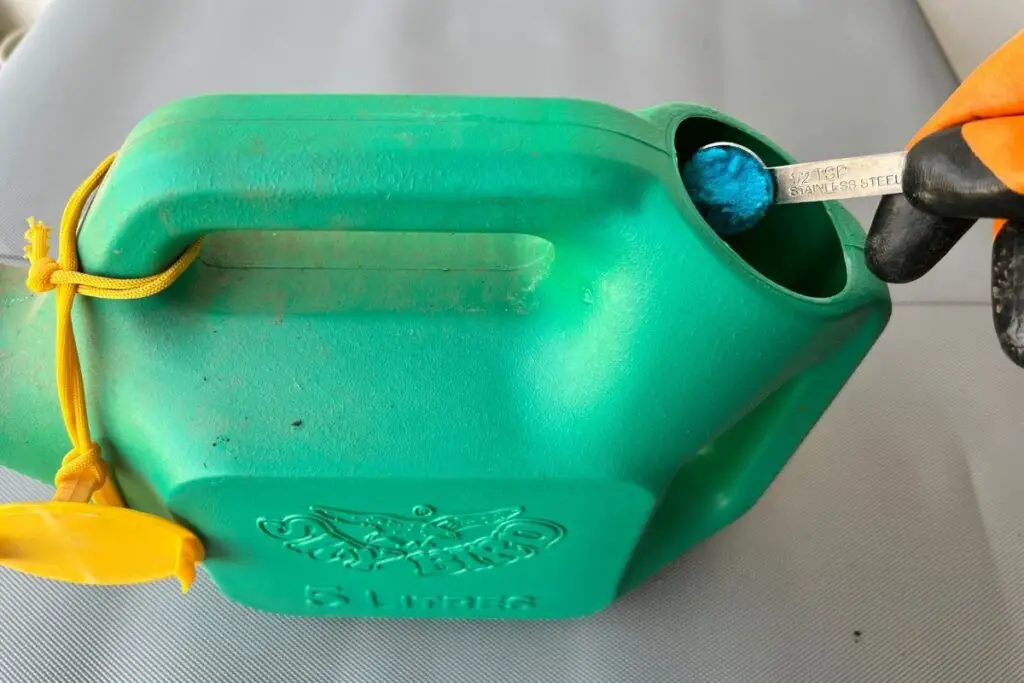
You cannot just use any fertilizer.
You must use the one that goes average in nitrogen, low in phosphorus, and high in potassium.
A high phosphorus level prevents the roots from up-taking the other essential nutrients.
It causes a deficiency of nutrition, resulting in yellow leaves.
High phosphorus content also stops the plant from flowering profusely.
It generally happens due to the overzealous use of fertilizer that contains high phosphorus levels.
These are usually sold as bloom boosters.
But it doesn’t work great with the hibiscus plants.
How to address the issue?
Stop using the fertilizer with high phosphorus contents and start watering the plant to flush off the salt build-up.
To confirm the problem, send a soil sample for testing.
Don’t fertilize for some days until the plant has recovered.
If taken good care of, the plant will recover quickly, but if the phosphorus build-up is huge, the plant will take time to heal.
Improper soil pH level

An ideal pH level for Hibiscus is between 6 and 7.
If the soil is extremely acidic or alkaline, it will stop the plant from absorbing the other nutrients from the soil.
It will make the plant suffer from under-fertilization despite having enough nutrients.
The leaves turn yellow with green veins, a condition called chlorosis.
How to fix the problem?
If the leaves turn yellow regardless of proper watering, light, or fertilization, consider buying a soil gauge to determine the soil’s pH level.
Grow Hibiscus in raised beds or pots if your garden’s soil is too acidic or alkaline.
You can add wood ash or lime to fix the pH level.
Also read: What Kind Of Soil Does A Hibiscus Plant Like? (+Best Soil Mix)
Temperature variation
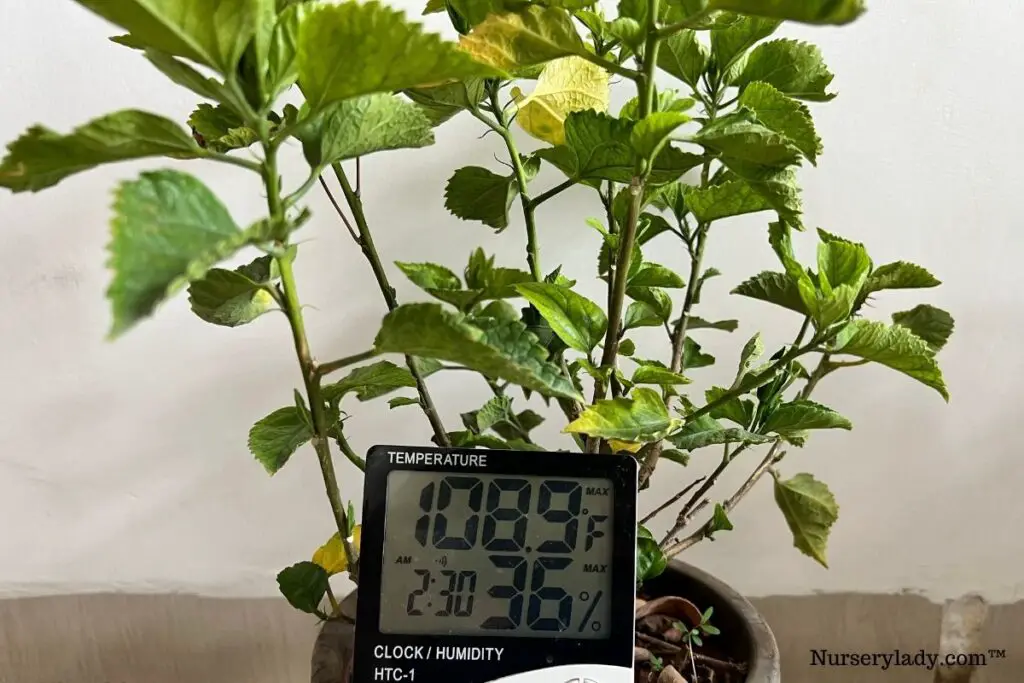
Excessive hot weather can make the soil dry faster.
It can result in yellow leaves if you don’t increase the watering frequency.
Hibiscus will grow best in warm temperatures.
But it has to be within 65 and 85°F.
Temperature above 90-95°F will dry out the soil faster.
Similarly, the temperature shouldn’t drop below 55°F.
Otherwise, it can stress the plant.
Stress will result in yellow leaves.
How to adjust the temperature?
To protect the plant from high temperatures, let them have some partial or dappled sunlight.
Shading the plant with clothes or nets will block the PAR the plant requires for blooming.
Consider planting Hibiscus in front of some tall trees at a distance to enjoy dappled sunlight or partial shade.
Increase the watering frequency in summers when the temperature reaches its top.
Apply a thick layer of mulch around the plant base to maintain humidity during the winters.
Shade the plant with a frost cloth to prevent cold damage.
Fix some lights under the cloth to warm up the plants.
If you grow Hibiscus in containers, shift them indoors if your region gets frost.
If only one side of the plant gets yellow leaves, it could be due to sudden drafts.
Shift your plant from such a location and keep them away from places where air drafts enter frequently.
Also read: Hibiscus Temperature Tolerance: Ideal Range+USDA Zones
Chemical shock
The use of several chemical products causes this issue, especially if you apply them uncontrollably or use them during the day’s extreme heat.
The chemicals affect the root system and shock the system, thus causing yellow leaves and, sometimes, defoliation.
How to address the problem?
- Don’t use any chemical products for a few weeks.
- Water the plant very well to flush out all the chemicals and salt build-ups.
- Use organic fertilizers, homemade pesticides, and DIY fungicides to reduce risk.
- Always read and abide by the instructions if you use any chemical products. If you are confused about the amount or frequency, use less amount and frequency. Less is more.
Pest infestation
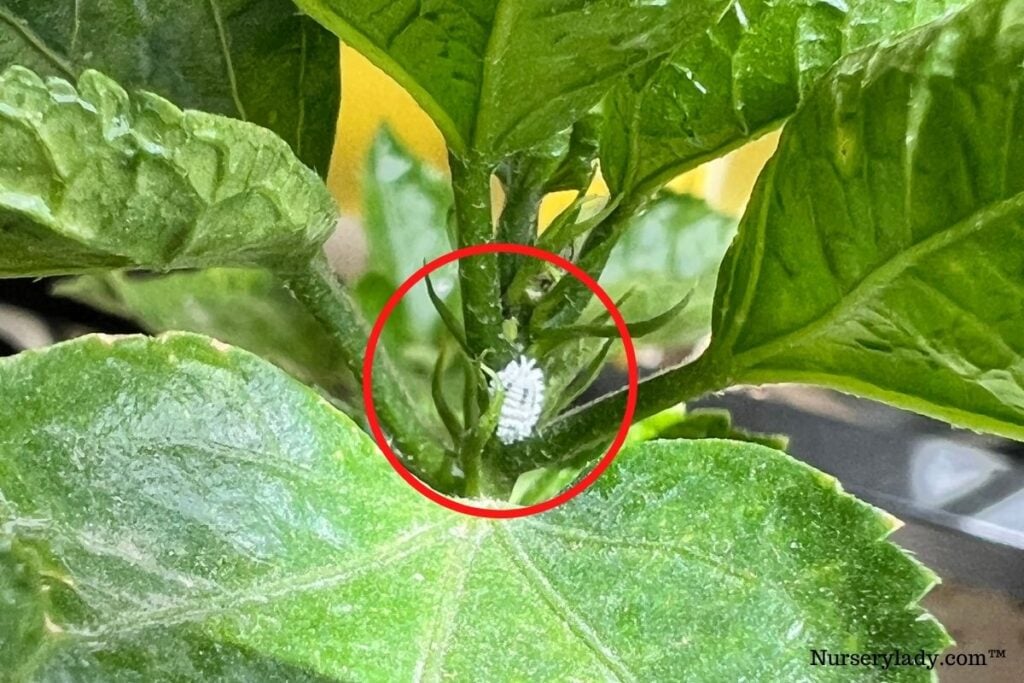
A healthy plant will rarely get attacked by bugs and other insects.
If your Hibiscus is stressed due to adverse conditions, the plant will become susceptible to pest infestation.
A poorly infested plant will, later on, become prone to various diseases.
A common bug is the spider mite that leaves behind white webs and pin-sized yellow spots.
They enjoy prolonged droughts and low humid conditions.
Other than that, sap-sucking insects like aphids, mealybugs, scales, whiteflies, etc., make the leaves weak and yellow.
These insects enjoy prolonged damp conditions.
How do I remove the bugs?
- Isolate the plant and remove the infected, yellow leaves.
- Shower the plant to wash away the bugs.
- Let the plant have some sunlight.
- Use neem oil on the infected parts. It is a remarkable insecticide spray and works great.
- You can use soapy water. Coating the bugs with soap with cut off their oxygen, and the chemicals present in the soap will kill them.
- Some insects like mealybugs and hard scales have a shell on their body that protects them from water-based pesticides. Spray or dab some rubbing alcohol to weaken their shield and kill them.
- If the infestation is large, you must use insecticidal soaps and pesticides to remove them.
Also read: How Do I Get Rid Of Bugs On My Hibiscus? (Common Bugs+Fix)
Dormancy
The growing season for Hibiscus is spring, summer, and fall.
They will either slow down their growth in the winters or become dormant.
At the end of the fall, the leaves will turn yellow and slowly fall off the plant.
The plant will rest and won’t use any energy to prepare food or flowers.
There is no solution here.
In the winters, reduce the watering frequency, stop fertilizing and let the plant rest.
Also read: How Fast Do Hibiscus Plants Grow? (Hibiscus Growth Rate )
Environmental changes
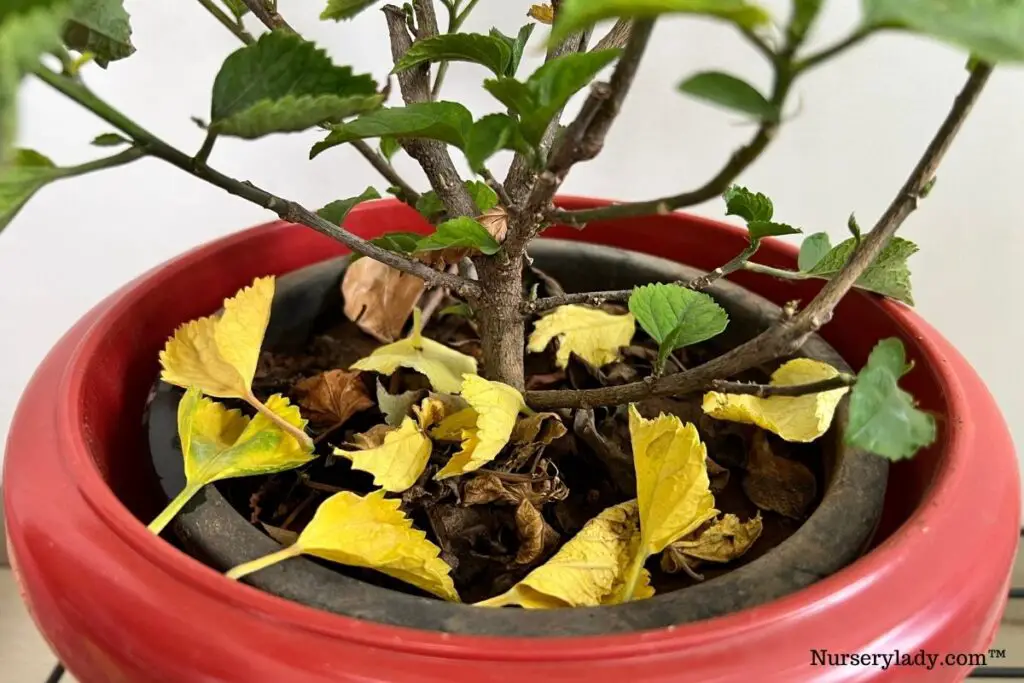
Hibiscus plants are sensitive to sudden changes in their surroundings.
If you have changed the location of potted plants or repotted them recently, the plant is likely to have yellow leaves.
You don’t have to worry much because this is the plant’s way of reacting to this sudden change.
Make sure not to stress the plant further.
Once they recover from the shock and adjust to the new environment, they will not have any yellow leaves.
How to care for Hibiscus to prevent yellowing?
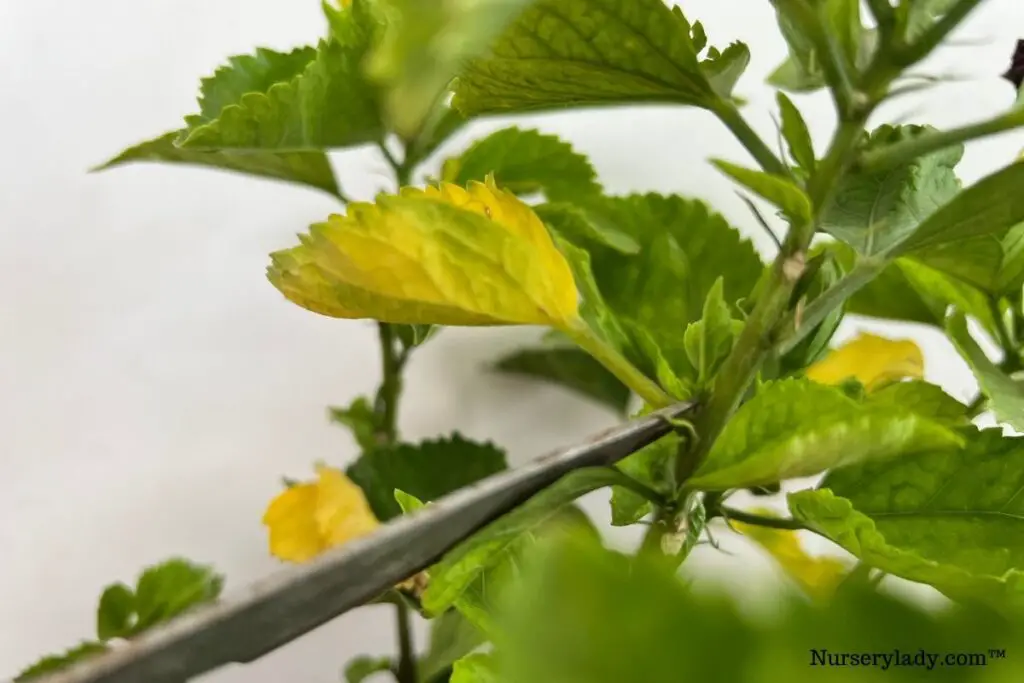
Give enough sunlight: The hibiscus plants should receive 6 to 8 hours of direct sunlight daily.
When the heat intensity becomes intolerable in summers, fix shading nets.
But make sure it doesn’t completely block the sunlight.
Fix it in a way that the plant acquires partial sunlight.
Water properly:
- Water the Hibiscus every 4-5 days in the spring.
- Water them daily in the summers, especially if the weather is too hot. If the weather is scorching, Hibiscus may need 2-3 times watering in a single day.
- Reduce watering frequency in the winters.
- Always water the plant when the top 1-2 inches have dried.
Ensure drainage: Use well-drained loamy soil for Hibiscus.
The soil must balance drainage and retention to prevent overwatering and underwatering.
Well-retentive soil will also hold nutrients.
The pH level should be between 6 and 7.
Fertilize properly: Use a fertilizer with average nitrogen, low phosphorus, and high potassium contents.
Avoid using any bloom boosters.
Use the right container: Always use a planter with drainage holes.
There have to be at least four holes.
Don’t use a very big or small container.
It should be proportionate to the plant’s size.
Protect the plant from harsh weather:
- If the weather is hot, fix shading nets or plant your Hibiscus around some tall trees to let them benefit from the dappled shade.
- If the weather is cold and frosty, grow Hibiscus in containers and take them inside.
- Add an 8-inch layer of mulch and fix frost clothes if they are outside.
Don’t suddenly change the location of Hibiscus: If you want to take Hibiscus outdoors, start exposing them for small timings and slowly increase the span.
For shifting indoors, start in the fall but gradually.
It will let the plant get adjusted to the environment. Repotting or transplantation stress is natural.
Check for pests: Observe your plant closely per day to look at pests.
If you ever see any sign of it, take immediate steps.
Daily observation will prevent the pest from spreading.
Applying Neem oil as a mister once a month is a good preventive measure.
Final thoughts
Yellow leaves are an enjoyable sight amidst so many green hibiscus leaves. But, it is not the death of your plant. Once you identify the problem behind yellowing, taking quick action will help the plant revive.
The leaves may not turn back green, especially those that have completely turned yellow. You can remove them from the plant if you don’t enjoy them. However, they will fall on their own after recovery.
Take care of the plant and follow the care tips I shared to prevent the plant from having yellow leaves.
Reference: Wikipedia, ASPCA, Louisiana State University Agricultural Center, American Society for Horticultural Science, Tropical Hibiscus by Texas A&M University, Sciencedirect.
